Pernille Ripp's Blog, page 57
April 14, 2016
Somewhere in My Education #AgeofLiteracy
Somewhere in my education, I was taught to let others speak before me I was taught to wait my turn. To eat my words if that turn never came. I was taught to listen. To raise my hand. To share when asked. To give praise to others but downplay my own achievements. I was taught to be a good girl, someone who sat still, said “please” and “thank you” and always offered to help, even if it meant sacrificing my own creativity.
Somewhere in my education, I was taught to plan lessons for fictitious children that would make my classroom look like a mini UN with a smattering of acronyms. That came to us fed. That came to us with clean clothes and new supplies and unshattered dreams. That came to us believing that school was still about them and what they had to say had value. Who loved to read, to write, to discover, and all I had to do was preserve that notion of loving literacy. That those who needed more than what I could offer would always get it in some way.
Somewhere in my education, I was taught who the leaders were and to follow their ideas, for they had paved the path and certainly knew more than I ever would. In that same education, I was taught the research I needed to be better, and so I grew, but I was never taught to trust myself. I was never taught to seek more than just what was presented to me. I was never taught to see myself as a leader because good girls don’t lead, they follow.
But within this age of literacy where we fight to keep our students reading, where we have to know our research before others tell us what best practices are, we are all leaders. We are all of importance. Our ideas matter because our ideas change the way students feel about the very act of reading or writing. What we do now will not end with us today, but instead will live on in the lives of the students we teach. So we are leaders when it comes to the very ideas that shape the literacy identity our students have. Our words carry weight. Our words can harm or protect, so we must believe that our words have value.
So I hope today, that you will look in the mirror and tell yourself that your words should be heard. That your words deserve a larger audience than just you. That your ideas are worth spreading, even if no one asked you to. That when you change a student’s perception of what literacy means that whatever you just did then needs to be shared. That you can be a leader, that you probably already are.
Somewhere in my education I found my voice. I found my brave. I found my driving force, which will always be the students. Somewhere in my education I found out I could be a leader, even though no one told me so. Perhaps it is time for others to find the same.
This post is a part of the Age of Literacy that ILA encourages all of us to participate in on APril April 14th. How are you a literacy leader? If you are wondering why there seems to be a common thread to so many of my posts as of late, it is because I am working on two separate literacy books. While the task is daunting and intimidating, it is incredible to once again get to share the phenomenal words of my students as they push me to be a better teacher. Those books will be published in 2017 hopefully, so until then if you like what you read here, consider reading my book Passionate Learners – How to Engage and Empower Your Students. Also, if you are wondering where I will be in the coming year or would like to have me speak, please see this page.
Filed under: aha moment, Be the change, being a teacher, Literacy, student voice


April 13, 2016
The Test Does Not Care

We teach our students to ask questions, to share, to discuss. We teach them to find help when they need it, take their time when they can, and to always use their tools.
They sit where they are comfortable in order to access the learning best. They reach out to those they trust and they use us whenever they are lost or just want to make sure that the path they are headed down is, indeed, the right one.
We try to create learning environments where discovering facts is only the first step of the journey, using them as a way to further understanding is the next. We use our shared ideas to further the knowledge of others. Where mistakes happen and we try again. We try to create learning environments where students have a voice, where they have choices, where we try to make it personal so that the experience they have makes sense for who they are.
We do not pride ourselves on the scores that they get but instead on the books that they read, on the aha moments they have, on the growth they show. We pride ourselves on who they are as learners and not just what they produce. Their value is bigger than a number.
And yet…
In two weeks, my students will sit in rows in a bare room and spend four days taking the state standardized test. They will not be allowed to ask questions. They will not be allowed to help each others. They will not be allowed to use the very resources that I have taught them to use.
We will not reflect. We will not discover. We will not question. We will not grow. Not in a way that matters, anyway. Instead, they will sit, they will read, and they will answer. I will sit, I will watch, and I will make sure no one cheats. I will have a few scripted responses that I am allowed to say if a child asks a question. Once done, someone hired by the state, who has no idea who my students are, will grade their answers as if a short response will ever give a proper window into what they really know.
Because let’s be honest, the test does not care that they have grown in ways that cannot be measured.
Because the test does not care how hard they have worked to get where they are.
The test does not care that they may finally see themselves as a reader. Or a writer. Or a learner. Or even as someone who deserves to be a friend.
The test only cares for multiple choice. For pick the right answer. For write it right or it will be counted wrong.
So in two weeks when my students are reduced to nothing more than an entry ticket, I will hope that they know that they are bigger than that. That they are worth more than that. That everything they have done, how hard they have worked, how much they have grown may not be measured on the test, but I know. And so do they. And when the test passes, because this too shall pass, we will resume learning in all of its glorious messiness. We will fill our walls with what we need and our voices will ring true again.
I hope I have taught them enough. I guess the test will tell. Or perhaps maybe it won’t.
If you like what you read here, consider reading my book Passionate Learners – How to Engage and Empower Your Students. Also, if you are wondering where I will be in the coming year or would like to have me speak, please see this page.
Filed under: being a teacher, being me, testing


April 12, 2016
Share You
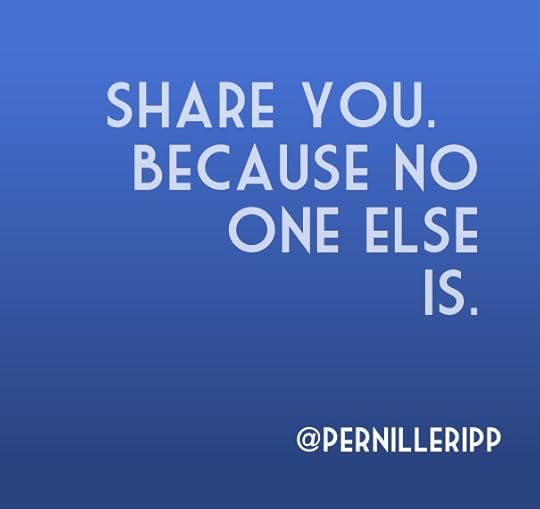
I didn’t know I had a story to share until I started sharing it. Until I started writing. Until I started speaking up. I didn’t know that the thoughts I had every day or the small ideas I came up with would matter outside of those 4 classroom walls. Not until I shared. Not until I had the courage to find my voice. Not until I hit publish and those things I had thought by myself were no longer my private thoughts. They were now public. They were now searchable. They were now open for judgment.
It still scares me to this day.
It still stops me at times.
There are conversations that I will never have on this blog. Topics I will never broach. And yet, those that once seemed terrifying sometimes lose their fear factor and find their way out into the open, just like that. And sometimes those thoughts start conversations that I could never have dreamed of that led me down a new path.
Yet, this blog is not just about me. It is about the kids that I get to teach and their stories that I get to share. The little things they ask me to change so that we can be better educators. And so I write for them because when I found my voice I knew I had to help my students find theirs.
So this past weekend when I sat at the amazing WGEDD conference with other educators and they told me of what they do in their classrooms, I asked them if they had shared those ideas in some way. Is there a place where others may find their genius? The answer was no. It often is, and I couldn’t help but wonder; what if?
What if we all found the courage to share more?
What if we started by sharing those small ideas that make our lives better? Those little things that may not seem flashy, or innovative, or any other buzz worthy adjectives you can think of. Those ideas that just work, that make our jobs easier, that make education better for our learners.
What if we found our courage because we realized that we are experts in our own right and what we have to share is worthwhile? That we do not have to wait for someone to give us a title, to pay us money, or to even give us permission (although if you need that; here have mine).
What if we found our courage to share more so that our students would also share?
There are too many who are silent. Who are afraid. Who do not think that what they do can help others. But they are wrong. Together we are better, and we never know what little idea may make the biggest difference to someone else.
So share your thoughts. Share your dreams. Share you. Because no one else is.
If you are wondering why there seems to be a common thread to so many of my posts as of late, it is because I am working on two separate literacy books. While the task is daunting and intimidating, it is incredible to once again get to share the phenomenal words of my students as they push me to be a better teacher. Those books will be published in 2017 hopefully, so until then if you like what you read here, consider reading my book Passionate Learners – How to Engage and Empower Your Students. Also, if you are wondering where I will be in the coming year or would like to have me speak, please see this page.
Filed under: aha moment, Be the change, being a teacher, being me


April 10, 2016
Driving Across North Carolina, Luckily Knowing We Were Only Passing Through
The words from my friend Jess deserve to be read by every single person out there. While I cannot guarantee that, I can use this blog as a way to hold up her voice, because if we let hatred rule our government, if we let hatred rule our decisions, then we will not be the America we set out to be; a land with freedom for all.
Two weeks ago, my wife and I drove with our three-year-old daughter from our home near Chicago to Myrtle Beach, South Carolina.
For most of the drive, one of my my biggest worries was the said three-year-old daughter and the likeliness that at any moment it was possible for her to turn into something resembling a monster should the conditions warrant such a transformation.
For most of the drive, one of my biggest worries was where we could stop for a bathroom break since my daughter’s idea of giving us advanced warning of her need for a bathroom involves approximately thirty-five seconds before it is too late.
For most of the drive, one of my biggest worries was what podcast we could listen to in order to stay entertained ourselves without exposing our daughter to anything too intense.
For most of the drive my worries included: How much battery was…
View original post 1,511 more words
Filed under: being a teacher


April 8, 2016
Reading Conferences With Students Within the 45 Minute English Class; Yes, It’s Possible
Confession time; I am terrible at conferring with my students. This once proud foundation of my elementary classroom is now a crumbling pillar in my 7th grade English class. Call it a victim of the 45 minute I have to teach everything in. A victim of the so much to do. A victim of not quite knowing how to make it productive. Whatever it is, the conferring that I know I should be doing has simply not been getting done.
Yet a few weeks ago, I realized that the one thing I needed the most (besides more time, more books, more knowledge) was the simple conference. The one to one interaction with every single one of my students if even for just a few minutes. Because conferring is the one way I can really reach all students. Is the one way we can connect the best. Is the one way that I can really see what each child needs. Conferring is the best way for me to be a better teacher to all of the needs must of us are faced with. So even within the 45 minute English class, with almost 120 students spread over 5 classes, there had to be a way. There had to be tweaks that could be made to make it work so an experiment began.
So what has worked and what have I discovered?
Reading conferring happens within the first 10 minutes of class. Every day we start with 10 minutes of independent reading. While nothing new, I now am much more purposeful with how I spend the time. So that 10 minutes is a perfect time for me to confer with students., therefore when the bell rings and the timer starts, so does my mission.
That my individual reading conferences focus on reader identity rather than on typical mini-lessons. There is no way for me at the moment to do one-on-one lessons and still make it to all of my students within about 2 weeks. So I instead focus on their reading identity and gather clues for what types of mini-lessons I need to create for small groups. That being said there are exceptions to the rule if I uncover a particular dire situation where a child is then given the full 10 minutes of time. This purpose for the conferences allows me to do quick check-ins and get to more kids.
That within those 10 minutes of independent reading I can shoot for meeting with 3 students. I come to the students, equipped with my binder and pen, ready to ask them questions. By me moving we save time and they can get as much reading time as possible until we meet.
That I need just one question to start every conference. I used to prepare for all of my conferences by coming up with several questions aimed at a specific child. Now every conference starts with, “What are you working on as a reader?” The direction of the conference then is directed by their answer.
That I need a simple system to keep track of notes. I used to take a lot of notes during my conferring but now find the need really just for three different things; my observations, their answers, and next steps. Every student therefore has a sheet with three different conferring boxes on it, each class has its own 1-inch binder for me to keep track and I write down only what I need to better teach the child. That means I am working on writing down only the essentials, in the moment, and still try to think of what to help them with.
So how has it been? Pretty amazing actually. The concentrated 10 minute effort means that I am fully attentive to what the students are saying ant thinking of other things. The short note-taking sheet means that I am ore focused in what I write down as well as what we need to work on next. The students seem to like it because they are getting more attention and still getting reading time. And the things I have uncovered? They are things I would not have uncovered no matter how many reflections I had students do, no matter how many small group lessons I would have conducted.
So while the 45 minutes of English class will never be ideal, it will never be enough, it will never feel like I can provide each child with the type of learning experience they deserve, it cannot hold us back. It cannot hold me back. And I cannot be the only one that is trying to do this. What has worked for you?
PS: As far as writing conferring, I use the entire class-time when we write meeting one-on-one with students. This has proven to be more effective for the students than doing a mini-lesson for the whole class since their needs are so diverse.
If you are wondering why there seems to be a common thread to so many of my posts as of late, it is because I am working on two separate literacy books. While the task is daunting and intimidating, it is incredible to once again get to share the phenomenal words of my students as they push me to be a better teacher. Those books will be published in 2017 hopefully, so until then if you like what you read here, consider reading my book Passionate Learners – How to Engage and Empower Your Students. Also, if you are wondering where I will be in the coming year or would like to have me speak, please see this page.
Filed under: being a teacher, Literacy, Reading, Reading Identity


April 3, 2016
Let My Students Read
My friend John Spencer had shared this on Facebook tonight

As I got ready to share the quote myself, the comment below it caught my eye…
“It’s also the job of the school to push children to read books that challenge them and take them out of their comfort zone.
Diary of a Wimpy Kid, Big Nate, and Captain Underpants are fine for kids to read and enjoy at home, but teachers should not permit them in the classroom. They provide no educational benefit.”
And I knew I couldn’t stay silent. I knew I had to respond even though I try to not get into it with anyone on Facebook. Even though I didn’t know the commentator and that I might be opening myself up to an argument I don’t feel like having as I wind down on a Sunday night. But when something like that is said, I have to say something back. After all, Diary of a Wimpy Kid, Big Nate, and yes even Captain Underpants all reside in my 7th grade library. Their covers are torn and tattered, they are often replaced. They are loved by many, myself included, and not because they are easy to read, but because they make students fall in love with reading.
So I took a deep breath, pushed my snark aside and wrote this reply…
Not true at all, for some students a book like Diary of A Wimpy Kid is the first time they have felt like they were a reader at school. Our job is not to be gatekeepers of which books students read but instead provide them with successful reading experiences in whichever books they choose so that they will continue to read. Then we can help them stretch into more challenging texts.
But what I really meant to say is that we must not censor.
That we must not think we know better when it comes to what a child needs to read any day.
That instead of judging we should support.
That we must create environments where students choice in books will be celebrated and discussed rather than dismissed and banned.
That it is not our job to be the gatekeepers for our students as Teri Lesene has said so many times.
That if a child is choosing to read books like those mentioned then they have a reason for it, even if that reason is that they do not know what else to read. Our job as teachers is to help them discover why they love the books so much and then expose them to more, just like we would with any book that a child chooses to read.
I speak for the child that this year has read Diary of a Wimpy Kid every chance he got, always turning the page, rereading and laughing every time with joy when he came to beloved sections. He tells me how long he spends reading, how it is his favorite thing to do, how every time he revisits that same old book, he discovers something new.
I speak for the child that never felt like a reader until Dav Pilkey created Captain Underpants and they finally had a character they could relate to.
I speak for the child that has always reverted back to these books until 2 weeks ago when he asked if he could read All American Boys because he had heard it was so good and now is 40 pages in and tells me it is the best book ever. Even if he not quite sure what is going on. Even if we had to go back a few pages and get a few things straight. Diary of a Wimpy Kid may not have been as demanding as All American Boys but those books made him feel safe. Like he could be a reader in our classroom. Like he could be a success story, just like everyone else.
It takes a great book to make a child believe that they too can be a reader and for many of our students that great book has been Diary of a Wimpy Kid. Why anyone would want to take that away from students beats me.
So do not tell me those books do not belong in our classrooms. Do not tell me that my students should not be allowed to read them in school. Do not tell me which books do or do not provide an educational benefit.
If my job as a teacher is to get students to read, then by golly those books, and any other books I can think of, will help me do just that.
I did not become a reader when I could read Huckleberry Finn, I became a reader when I chose to read.
So let our students choose to read. Whatever that may look like. As good teachers we know what to do. We know how to challenge them. How to make them reflect on their journey as readers. How to help them stretch into harder books and protect them when they get too far out of their comfort zone. Let our students fall in love with books so that we can help them discover more books. So that they will leave our classrooms and choose to read, even when they are busy. Even when life gets hard. Even when school is over. Let our students fall in love with reading so that they will choose to be challenged, and not because a teacher forced them to, but because they felt they were ready.
I owe so much to Jeff Kinney, Dav Pilkey and Lincoln Peirce. I think many of us do.
If you are wondering why there seems to be a common thread to so many of my posts as of late, it is because I am working on two separate literacy books. While the task is daunting and intimidating, it is incredible to once again get to share the phenomenal words of my students as they push me to be a better teacher. Those books will be published in 2017 hopefully, so until then if you like what you read here, consider reading my book Passionate Learners – How to Engage and Empower Your Students. Also, if you are wondering where I will be in the coming year or would like to have me speak, please see this page.
Filed under: being a teacher, being me, Literacy, Reading, Reading Identity, student choice


April 2, 2016
What Drives Your Instruction?
 Once in awhile I have the honor of having other educators visit our classroom, room 235D. While it is always nerve-wracking to have strangers watch you teach and ask your students questions, it always leaves me feeling so very grateful for the district I teach in, for the colleagues I have, for the students I teach. Yesterday was no different as I heard the students explain why we start with reading, why books matter to them, and what learning in this classroom looks like.
Once in awhile I have the honor of having other educators visit our classroom, room 235D. While it is always nerve-wracking to have strangers watch you teach and ask your students questions, it always leaves me feeling so very grateful for the district I teach in, for the colleagues I have, for the students I teach. Yesterday was no different as I heard the students explain why we start with reading, why books matter to them, and what learning in this classroom looks like.
Later in conversation, I was asked what drives our instruction? Having only 45 minutes to teach all of English, what is our ultimate goal? How do we possibly fit it all in and feel like we are not just getting things done? Before I talked about the standards that shape our choices. Before I talked about how our quarters are split up on their focus. Before I talked about the power of choice when it comes to what we teach, before I talked about how we listen to the kids in order to make it about them again, I knew what the answer was.
What drives our instruction? Helping kids fall in love with reading and writing (again).
Not the Common Core. Not the standards. Not covering content or getting-things-done. Not checklists, nor grades. Not comprehension or skills. Not things, nor projects.
Love.
And not just love for reading, for writing, for speaking, but for being immersed in an environment that focuses on learning for human development. Not for test scores, next year, grades, or honor rolls. Not for rankings or best of lists. No. What drives our instruction is much more simple, yet so much bigger.
Being a teacher isn’t just about teaching things, it is about teaching human beings, and those human beings need to know that what we do is bigger than a skill. Bigger than a subject. Bigger than getting through 7th grade.
So what drives your instruction? What would the students say?
If you are wondering why there seems to be a common thread to so many of my posts as of late, it is because I am working on two separate literacy books. While the task is daunting and intimidating, it is incredible to once again get to share the phenomenal words of my students as they push me to be a better teacher. Those books will be published in 2017 hopefully, so until then if you like what you read here, consider reading my book Passionate Learners – How to Engage and Empower Your Students. Also, if you are wondering where I will be in the coming year or would like to have me speak, please see this page.
Filed under: being a student, being a teacher, inspiration, Student dreams


March 28, 2016
Do You Do Global Collaboration with Your Students? Please Take this Survey
As part of my next book , which centers on global collaboration through a literacy lens, I am looking to highlight amazing teachers around the world that are doing just this; creating opportunities for their students to collaborate with others in their literacy instruction. I am looking for all grade levels anywhere in the world. The projects can be long or short, cross-curricular or not.
The survey should not take long but would help me showcase just how doing globally collaborative projects with students greatly enhances their learning experience. Please feel to share this post with others who may be interested.
Thank you from the bottom of my writer’s heart.
Pernille
Filed under: being a teacher


Why I Taught My Students to Email (And Maybe You Should Too)
I don’t know why it hadn’t hit me before this year; many of our students do not know how to email. I shouldn’t be surprised. After all, how many one line emails with little capitalization, no greeting or ending, and usually little specificity must one sit through before they get the message. And yet, it took me 8 years to realize that most students use email as a way to text and that teachers everywhere must be shaking their heads just like we have.
So this year, on the day back after spring break, we took 20 minutes to learn how to email better. It was so simple; students logged into their own email accounts and pulled up sent emails to teachers. A few were willing to share and I then shared a few myself that I had received. Some students laughed, others winced, but right away they started to see how their message could be read. How their intent could be misread and how in their endeavor to be efficient had forgotten what it meant to communicate well.
We then discussed how email is not like a text message, that while they may not use email much now except to communicate with their teachers, they really need to know how to write one anyway. That there is no excuse for being rushed or impolite when we speak to others and that email a conversation, albeit an electronic one.
We then spoke of the 6 steps to write an email:
Specific subject matter to alert the purpose
A greeting where the recipients name is correctly spelled.
A nicety to begin the body of the email; how are you can go a long way to start a pleasant conversation.
Specificity in their request. Not just “I need help,” but instead “I need help with…” and also including when they are available and would like to meet.
A wrap up sentence thanking for help or time.
An ending with their own name attached.
Students were then asked to email a teacher following the guidelines either asking for help, checking in on an assignment or simply reaching out. While this is not written anywhere in my standards, I feel that it was time well-spent. We may not have changed the world today, but as one student wrote today (in his email to me).
“Hi how are you doing, this email assessment is in my opinion is pretty cool. I think this will help with how I write my emails. I used to always do text message like emails with one sentence. Now I think with this new email format you showed us it will help me do better at writing emails to teachers or anyone.
Sincerely,…”
Sometimes it is, truly, the little things…
If you are wondering why there seems to be a common thread to so many of my posts as of late, it is because I am working on two separate literacy books. While the task is daunting and intimidating, it is incredible to once again get to share the phenomenal words of my students as they push me to be a better teacher. Those books will be published in 2017 hopefully, so until then if you like what you read here, consider reading my book Passionate Learners – How to Engage and Empower Your Students. Also, if you are wondering where I will be in the coming year or would like to have me speak, please seethis page.
Filed under: being a teacher


March 27, 2016
Picture Books that Celebrate Books and Libraries
It is no surprise that my own four children are picture book lovers. When a package arrives in the mail, they gather around me hoping that within in it will be a book for us to read together. If there is, we take the books, sit on the floor and read them right away. They fight me over which books stay at home and which go to my classroom. They have stacks by their beds, they have stacks in the car, they have stacks in the living room. We are surrounded by books, but even though we own many, we still love our beautiful public library. We visit once a week or so and always leave with a stack of books, eager to explore these newfound treasures. So I am delighted to showcase a list of must read picture books that celebrate books and libraries.
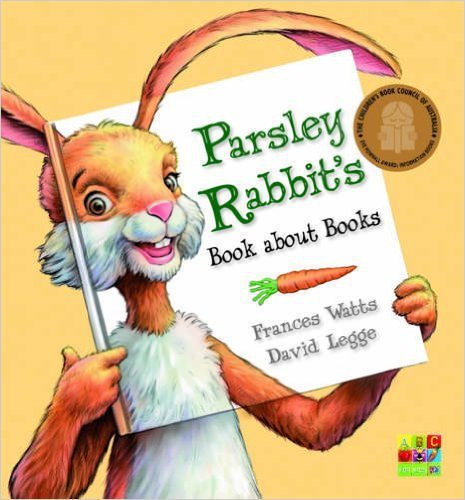
How about a picture books that actually explains the features of a picture book? Parsley Rabbit’s Book about Books by Frances Watts and David Legge does just that and does it so very well. While this definitely belongs in the hands of younger children, I plan to show it to my 7th graders too as a way to prompt discussion on creative ideas.

Laura Numeroff is a beloved author in our house so we were delighted to receive Beatrice Doesn’t Want To, a book that is all about a little dog that does not want to go to the library, nor read any books. I laughed when I thought of how I have seen this play out in my own life.
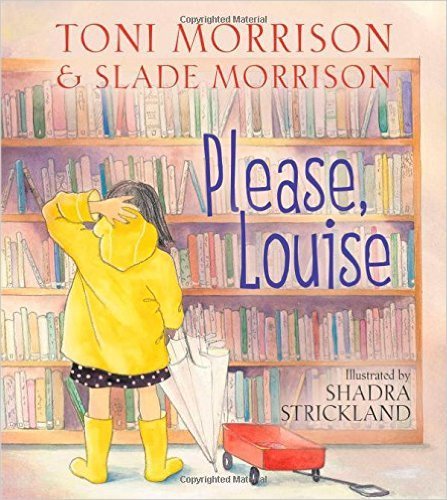
I love that Toni Morrison and Slade Morrison wrote Please, Louise because it illustrates so beautifully how much a trip to the library can change your life. It truly turns any boring day into one filled with adventure.
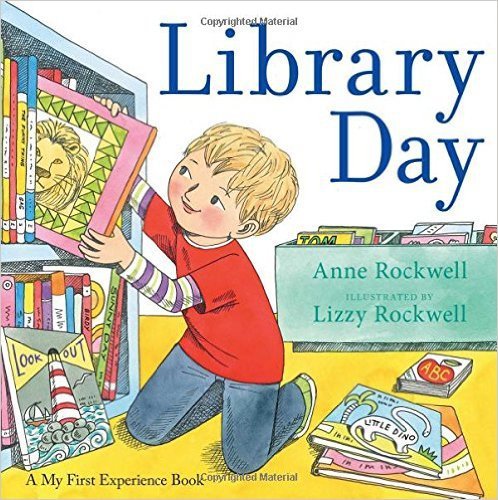
Another great book to illustrate what a library does and what it can do for you is Library Day written by Anne Rockwell and illustrated by Lizzy Rockwell.
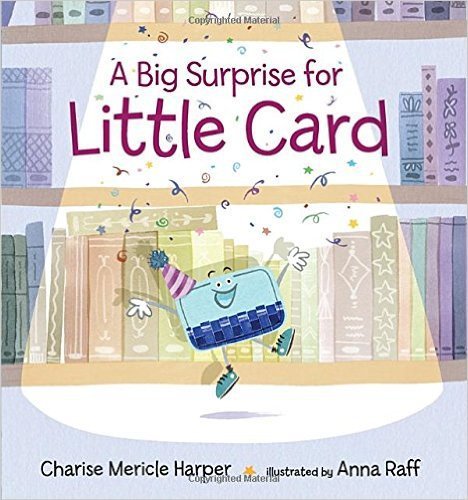
This whimsical tale of a card that doesn’t know its place in the world until it is revealed it is a library card is a wonderful way to celebrate not just the magic of libraries, but also about figuring yourself out and how you can make others happy. I have a copy of A Big Surprise for Library Card by Charise Mericle Harper and illustrated by Anna Raff both at home and in my classroom because it deserves to be read by many ages.
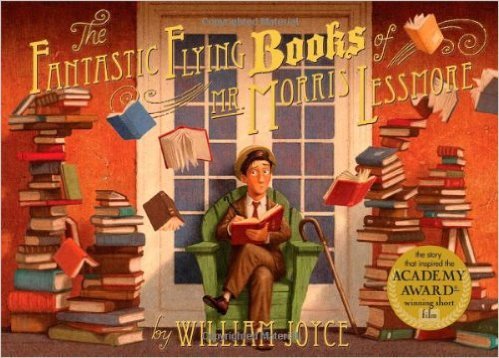
I read The Fantastic Flying Books of Mr. Morris Lessmore by William Joyce aloud every year and every year I get little choked up. It is an incredibly beautiful story and metaphor for life. It is also a great picture book to use for theme and inference.
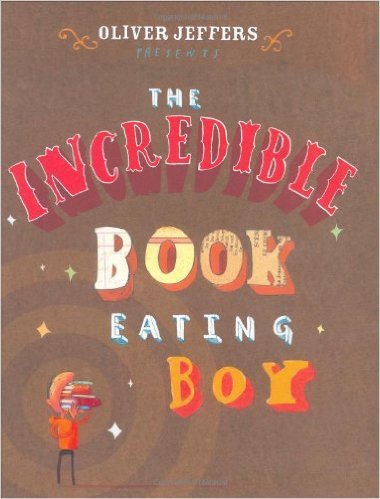
Another incredible picture book that can be used to discuss metaphors and inference is The Incredible Book Eating Boy by Oliver Jeffers. This book is fun to read aloud and makes students think about the power of a great book.
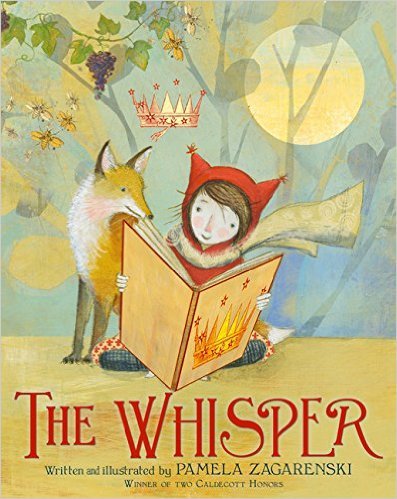
The Whisper by Pamela Zagarenski is beautiful both in text and in the illustrations. Using a book whose words fall out as a way to discuss imagination is a marvelous way to get students thinking more creatively.
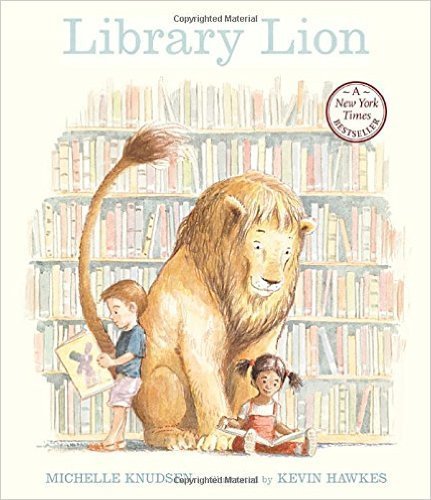
I don’t know how it took me 9 years to discover the story of Library Lion by Michelle Knudson and illustrated by Kevin Hawkes. The story of a lion who doesn’t quite know to fit into the library yet so wants to be a part of the book community is one that is sure to resonate with many of our readers.
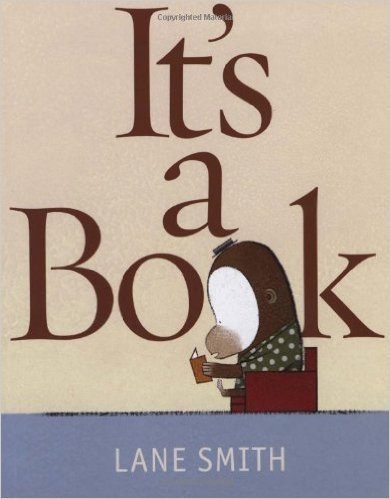
I read It’s a Book by Lane Smith every year to my students and it never fails; they always laugh out loud. What a great way to start discussing why we read and what books can do for us.
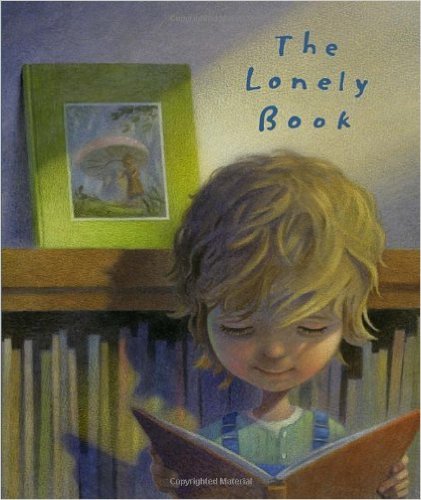
While The Lonely Book by Kate Bernheimer and illustrated by Chris Sheban is the story of a book that sits forgotten, the theme of this story is so powerful for students. This book also leads to great conversations about which books we carry in our hearts long after we read the, this is therefore a great book to start your book community with.
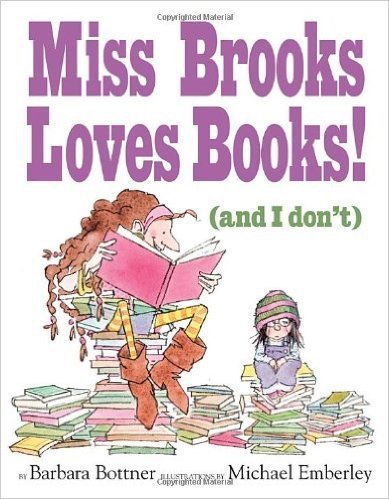
How many times has a child told us they hate reading and there is nothing we can do that will change their mind? Miss Brooks Loves Books (And I Don’t) by Barbara Bottner and illustrated by Michael Emberley is for all of those kids and the teachers who refuse to give up.
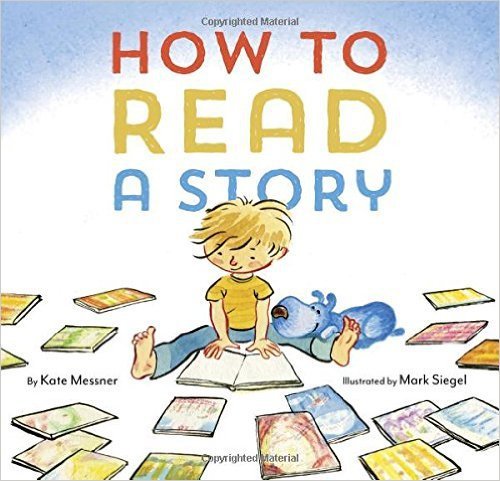
I have been a loud Kate Messner fan since she was a Global Read Aloud author several years ago. I was therefore thrilled to use one of her latest picture books How to Read A Story with my 7th graders this year as we started to lay the foundation for our reading community. How to read a story in our classroom was a great conversation to start the year.

A book I have been meaning to re-purchase is The Librarian of Basra – A True Story from Iraq by Jeanette Winter. My students could not believe the story when I read it aloud and it worked as perfect spring-board into a discussion of the war in Iraq and what it means to live in a country at war.
This post could feature another 20 books at least but I would rather hear from you. What are your favorite books about books and libraries?
If you would like to see more of our favorite books, please go here.
If you are wondering why there seems to be a common thread to so many of my posts as of late, it is because I am working on two separate literacy books. While the task is daunting and intimidating, it is incredible to once again get to share the phenomenal words of my students as they push me to be a better teacher. Those books will be published in 2017 hopefully, so until then if you like what you read here, consider reading my book Passionate Learners – How to Engage and Empower Your Students. Also, if you are wondering where I will be in the coming year or would like to have me speak, please seethis page.
Filed under: being a teacher, books, Literacy, picture books






